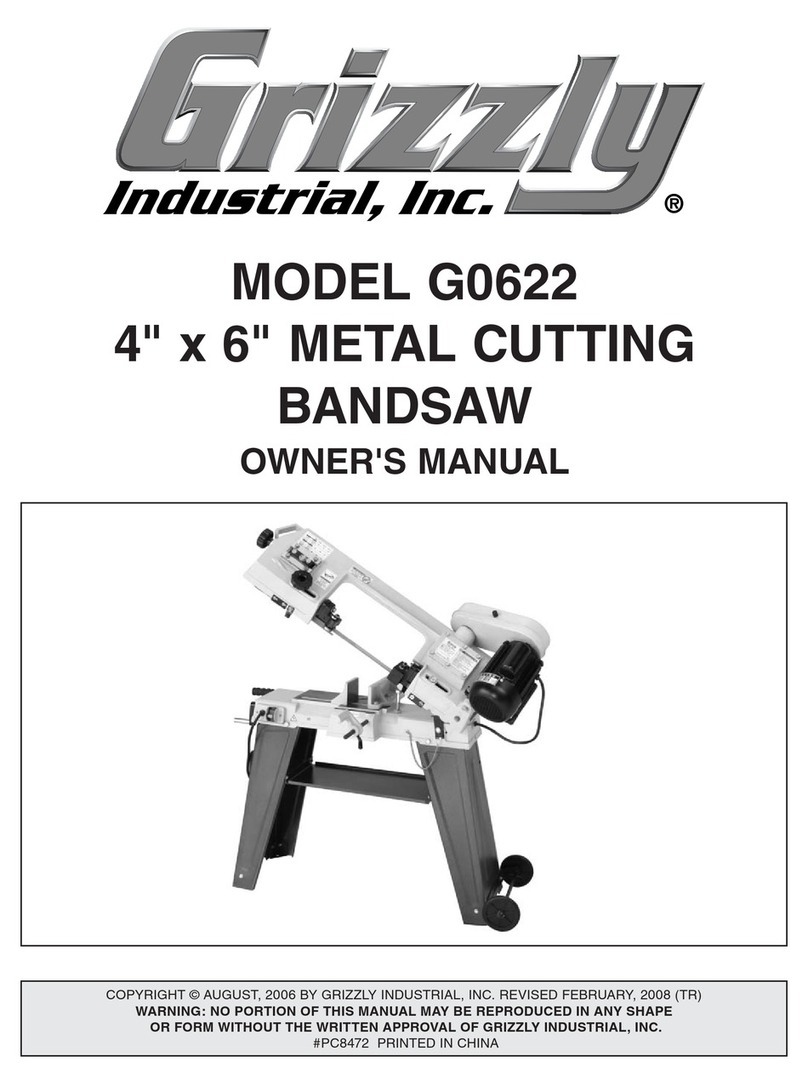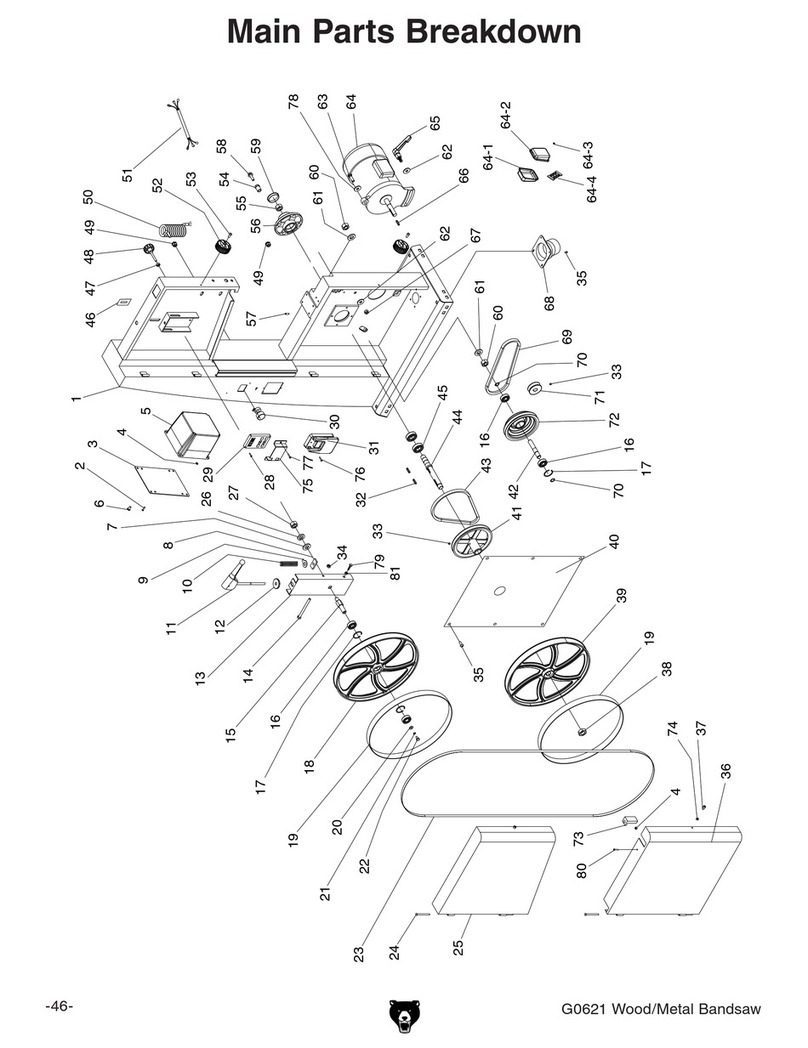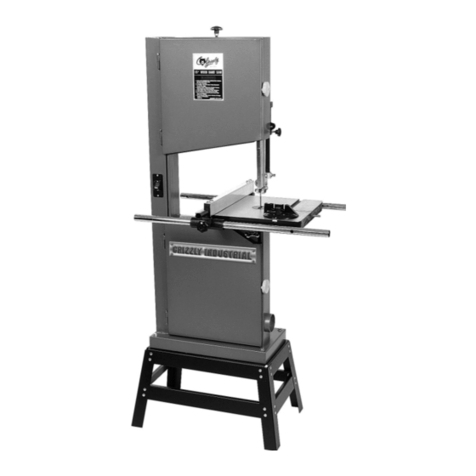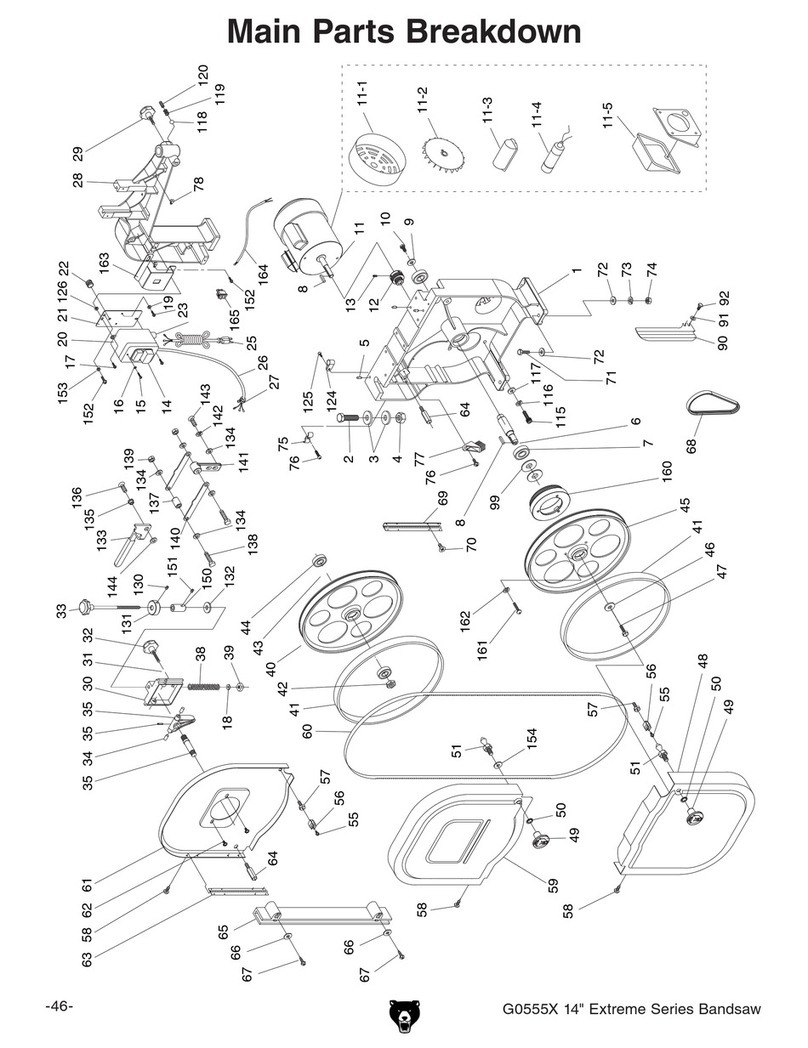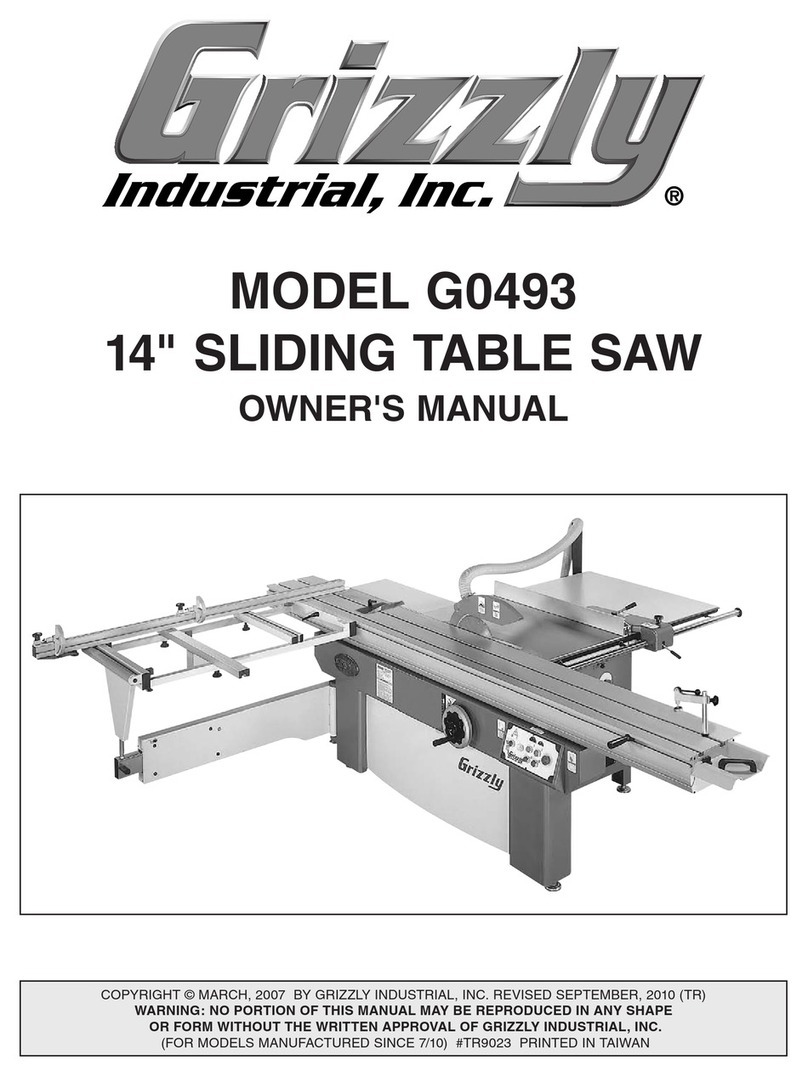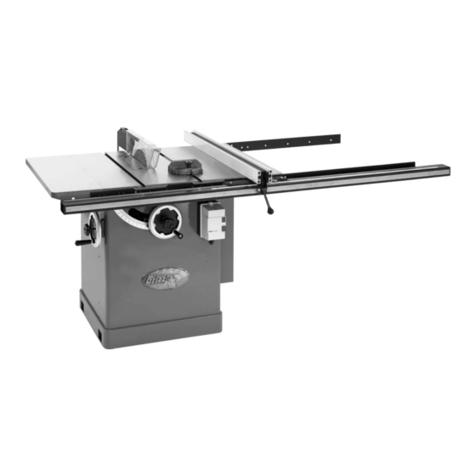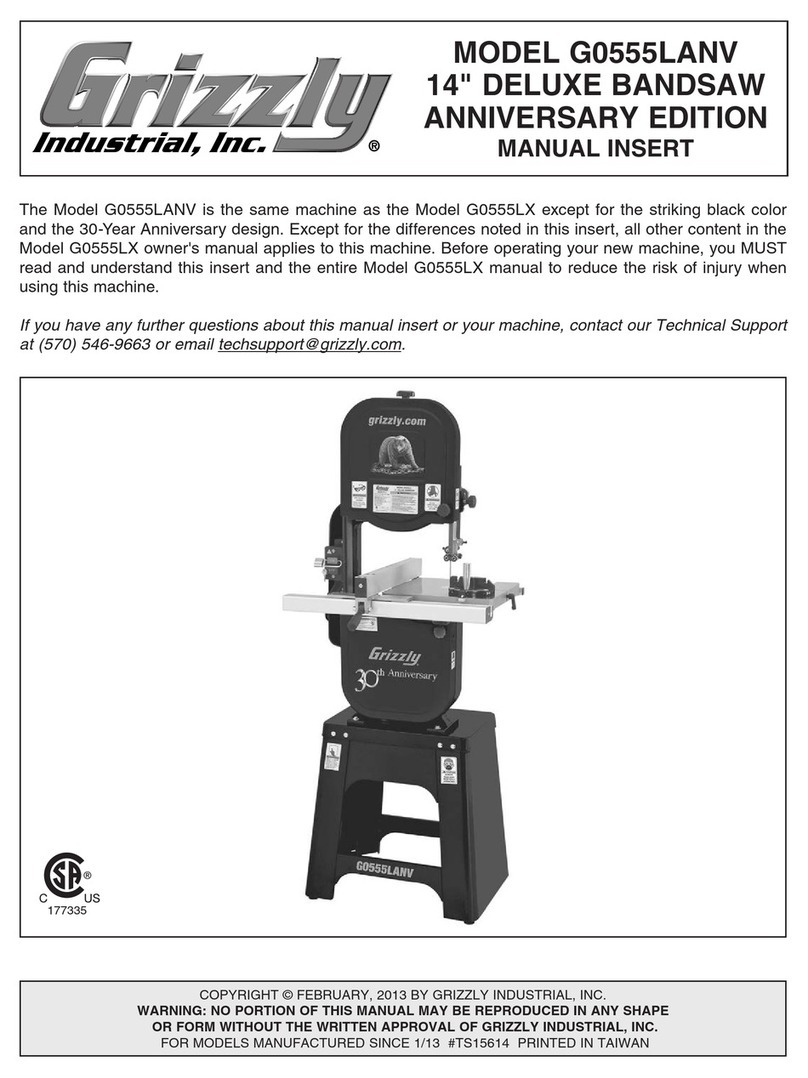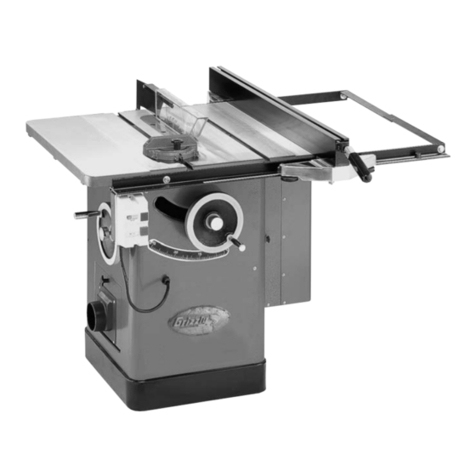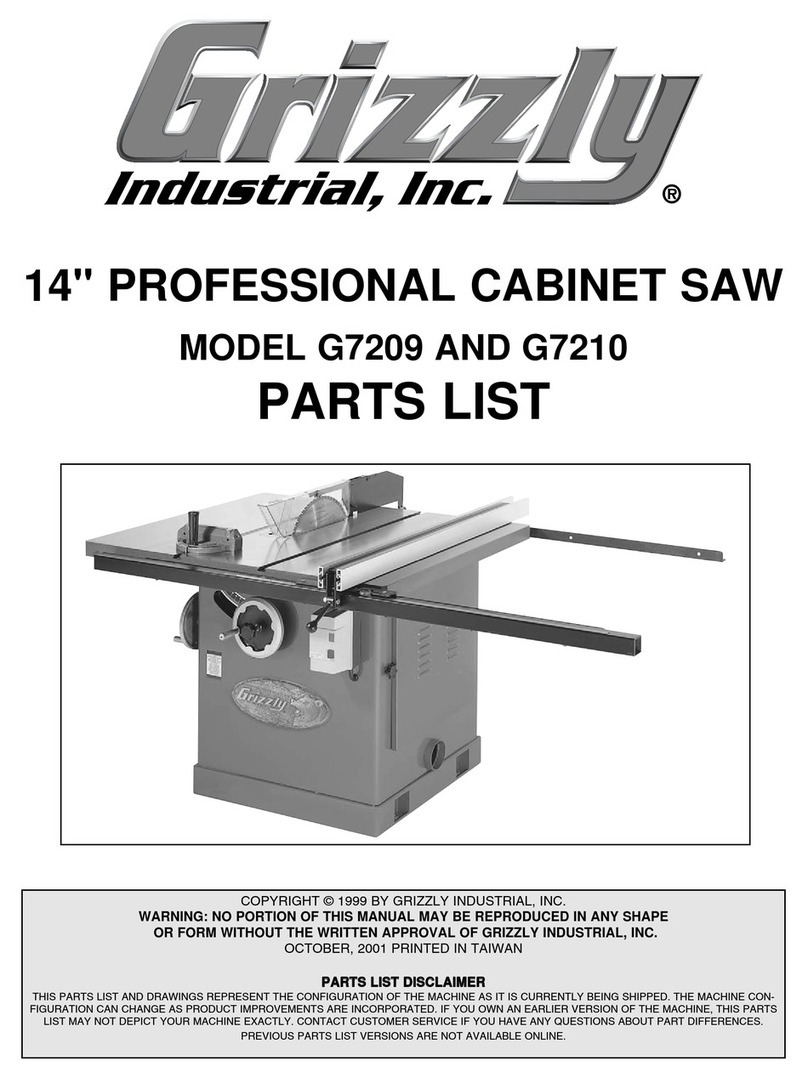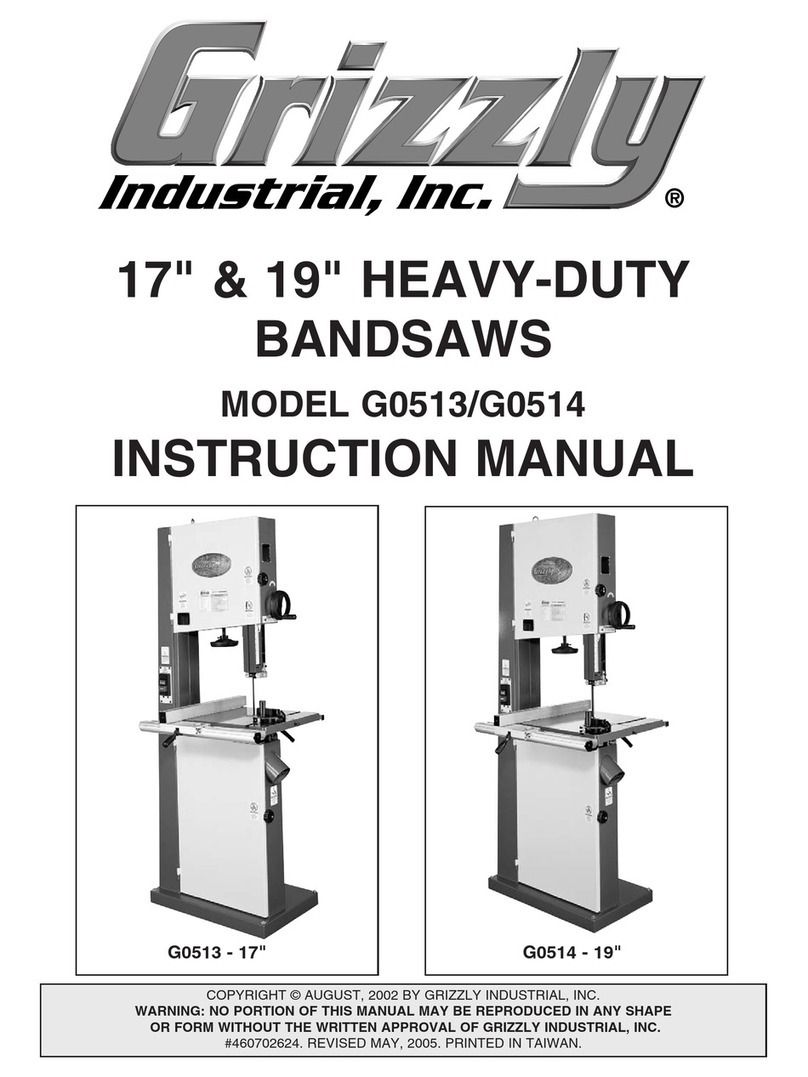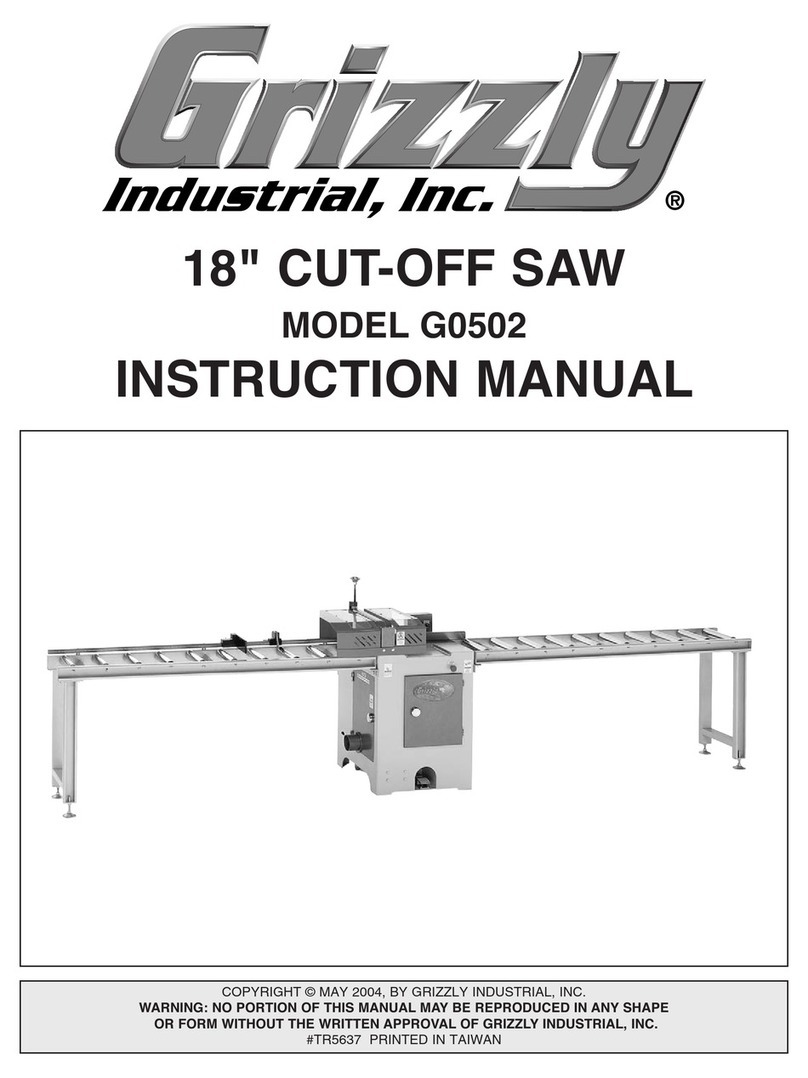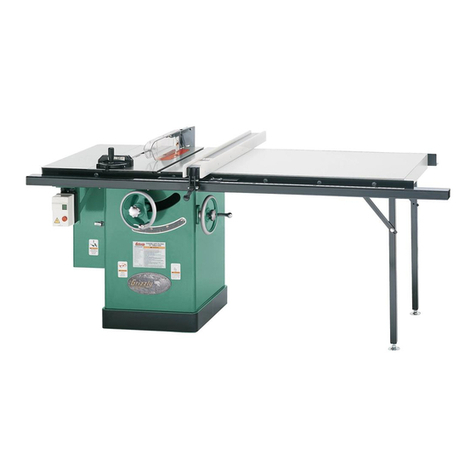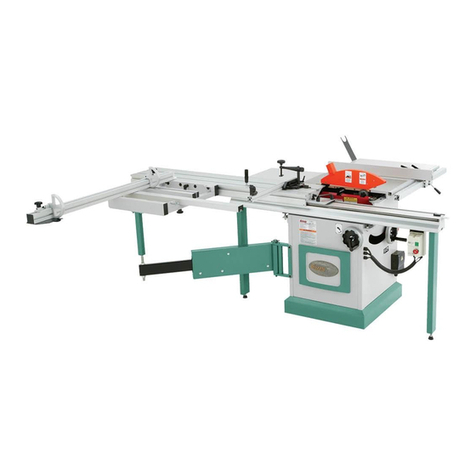-4- G1012 18" Bandsaw
Safety Instructions For Power Tools
14. MAINTAINTOOLSWITH CARE. Keep tools
sharp and clean for best and safest perfor-
mance. Follow instructions for lubricating
and changing accessories.
15. DISCONNECTTOOLS before servicing and
changing accessories, such as blades, bits,
cutters, and the like.
16. REDUCE THE RISK OF UNINTENTIONAL
STARTING. Make sure switch is in off posi-
tion before plugging in.
17. USE RECOMMENDED ACCESSORIES.
Consult the owner’s manual for recom-
mended accessories. The use of improper
accessories may cause risk of injury.
18. CHECK DAMAGED PARTS. Before further
use of the tool, a guard or other part that is
damaged should be carefully checked to
determine that it will operate properly and
perform its intended function. Check for
alignment of moving parts, binding of mov-
ing parts, breakage of parts, mounting, and
any other conditions that may affect its oper-
ation. A guard or other part that is damaged
should be properly repaired or replaced.
19. DIRECTION OF FEED. Feed work into a
blade or cutter against the direction of rota-
tion of the blade or cutter only.
20. NEVER LEAVE TOOL RUNNING UNAT-
TENDED. TURN POWER OFF. Don’t leave
tool until it comes to a complete stop.
9. USE PROPER EXTENSION CORD. Make
sure your extension cord is in good condi-
tion. When using an extension cord, be
sure it is rated Hard Service (grade S) or
better. Conductor size must be 16 A.W.G.
for cords up to 100 feet in length.An under-
sized cord will cause a drop in line voltage
resulting in loss of power and overheating.
Your extension cord must also contain a
ground wire and plug pin. Always repair or
replace extension cords if they become
damaged. Minimum Gage for extension
cord: 16 A.W.G. 50ft
16 A.W.G. 100ft
14 A.W.G. 200ft
12 A.W.G. 300ft
10. WEAR PROPER APPAREL. Do not wear
loose clothing, gloves, neckties, rings,
bracelets, or other jewelry which may get
caught in moving parts. Non-slip footwear
is recommended.Wear protective hair cov-
ering to contain long hair.
11. ALWAYS USE SAFETY GLASSES. Also
use face or dust mask if cutting operation is
dusty. Everyday eyeglasses only have
impact resistant lenses, they are NOT safe-
ty glasses.
12. SECURE WORK. Use clamps or a vise to
hold work when practical. It’s safer than
using your hand and frees both hands to
operate tool.
13. DON’T OVERREACH. Keep proper footing
and balance at all times.


